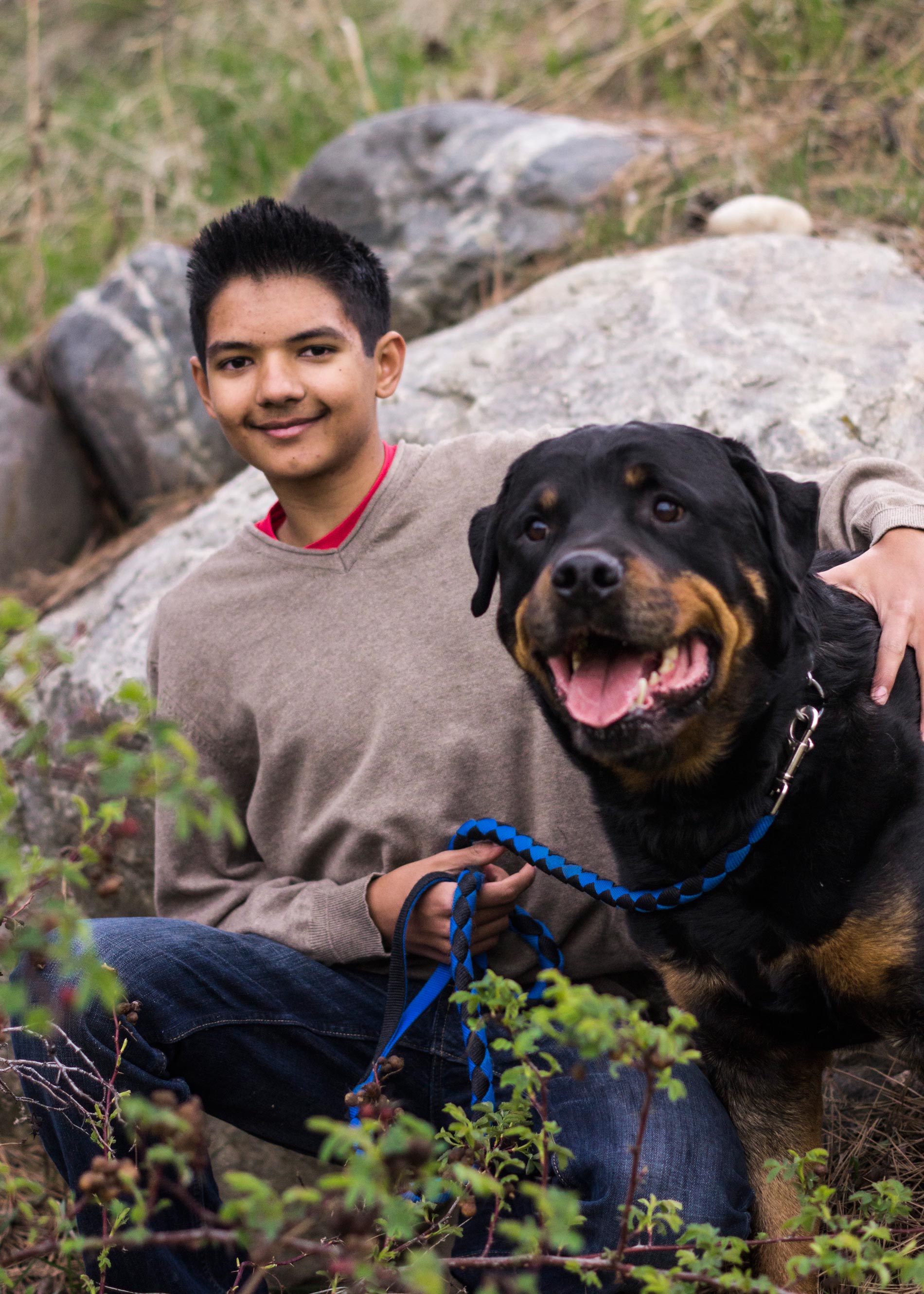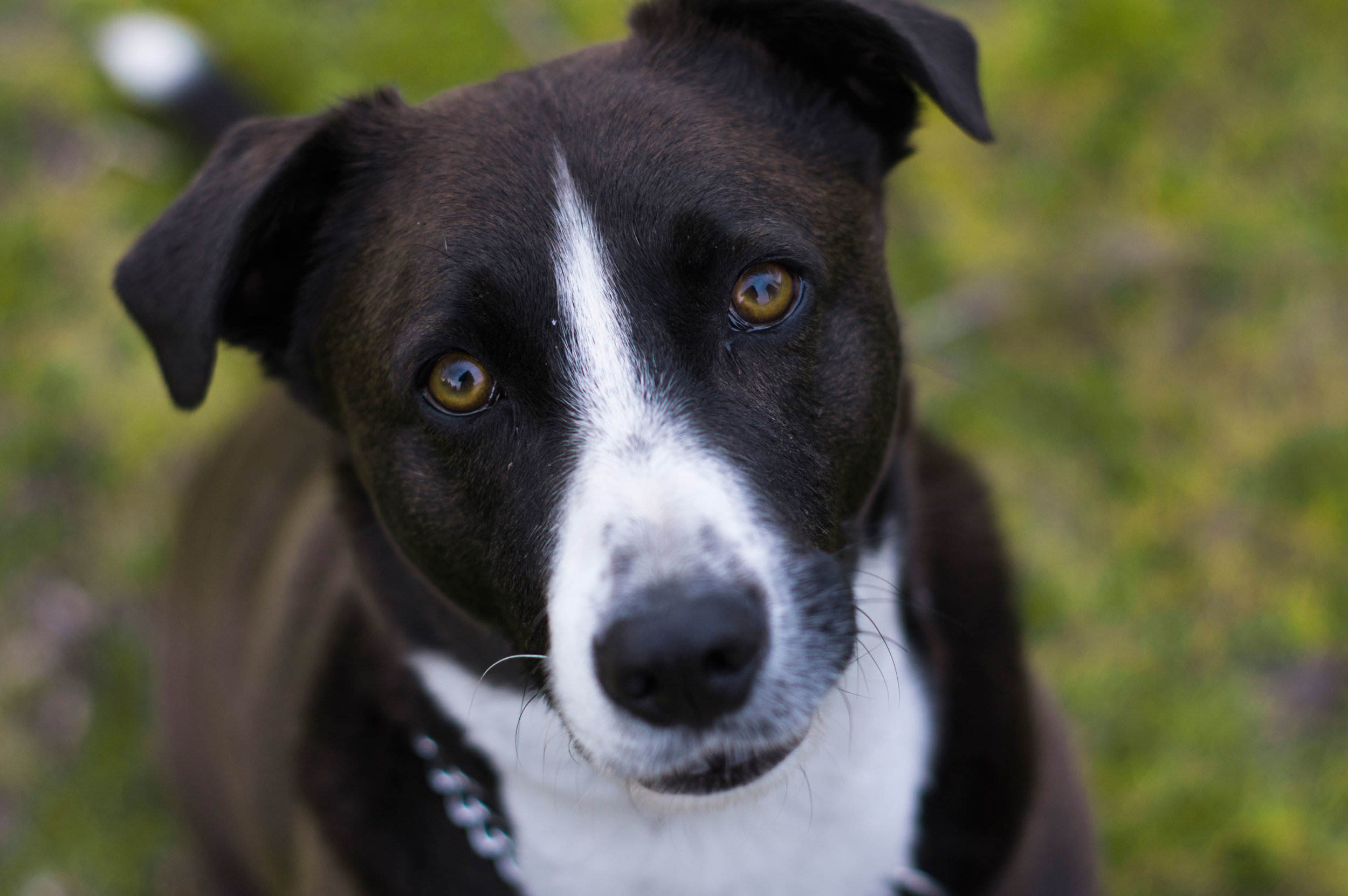Despite the age of 8 years, Baloo has led quite a sheltered life. Busy people lead busy lives – a common situation for many families, as it has been for Baloo’s owner and his 15 year old son Shawn. With virtually no obedience training coupled with little exercise, this imposing Rottweiler was not easy to handle. Walks on a leash became a huge challenge and therefore dwindled to near extinction.
With no proper socialization skills, this big guy became a black torpedo set to launch at almost any moving target when on leash or off. He also learned how to throw his weight around, having shared the back yard with a Bull Mastiff and English Bulldog – all very powerful and naturally dominant breeds. Competitive squabbles would at times break out, especially when governing the back fence line which looked down upon a neighborhood park trail. Barking and lunging became Baloo’s daily source of energy release out of pure boredom and frustration.
This situation would intimidate most adults, let alone a young man at age 15. Yet Shawn’s keen desire to learn how to build a healthy connection between himself and this astute dog is what gave me the incentive to work with them together. Although Baloo has shown a tremendous lovable character, he was no pushover. A dominant attitude and sheer physical power were two tremendous obstacles to counteract especially at his age. This dog required strong strategic training to set him on the right track.
The first step that helped with Baloo’s transformation, was introducing him to a quieter environment at Shawn’s home with his Mom. This immediately took him out of his conditioned ‘power zone’, which enhanced the opportunity to develop a partnership between a boy and his dog. Second was teaching Baloo to respect people not dominate them. It was vitally important to gain Shawn’s mother’s support to join us on the journey of rehabilitation. Everyone in the family needed to be on the same page to meet the level of consistency required to gain the desired changes.
I initially worked with Baloo one on one, then introduced Shawn into each exercise once the dog started to show signs of healthy submission, on the path to respectful behaviour. Teaching Shawn the most appropriate equipment to use along with the correct way of interacting effectively with the line of communication, was crucial in developing the behaviour we wanted to see. Specific techniques were also applied to control Baloo’s ingrained physical habit of cutting you off & lunging toward other dogs – not necessarily with the intent of aggressiveness but always excessive excitement.
We also found Baloo to be overly reactive to any physical touch, as he was use to competitively warding off the other family dogs to maintain his power status among them. The Tellington touch eliminated this issue. We gained another foothold to correct bad behaviour, and introduce rewarding the good. There were plenty of lessons in proper heeling, basic commands, and spacial boundaries in and out of the home were all necessary to help develop attentiveness and general respect.
Step by step, Shawn had to prove that he was capable of handling this large powerful dog. His decision to stay on course has directly influenced the direction and therefore the results that have been achieved so far. This was possible because of his earnest desire to achieve a goal and walk the talk alongside his receptiveness in receiving supportive direction. We see the continued efforts has produced a much happier canine. With a quiet determined focus, Shawn’s level of maturity has helped transform an inattentive, commanding dog into a more sound partnership and affectionate family guardian. That’s impressive for a 15 year old.




